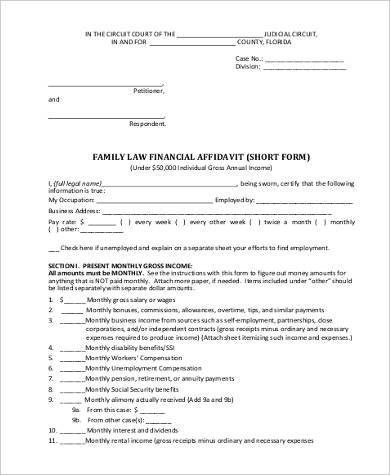 If you make a written statement to the police or another acknowledged authority like a notary public that you just swear is the reality, the whole fact, and nothing but the truth, what you have put down on paper is an affidavit.
If you make a written statement to the police or another acknowledged authority like a notary public that you just swear is the reality, the whole fact, and nothing but the truth, what you have put down on paper is an affidavit.
The relationship of the affiant to the litigant(s). The relationship of the affiant to a number of events involved in a lawsuit ought to be included when the affidavit can be used in reference to the go well with. Both people must signal and attest that the wedding is valid and legally binding. The form itself provides very simple information about the wedding, including the date that it occurred and the state through which it occurred. Usually, you will need to signal the affidavit in the presence of a witness and ensure that it’s notarized properly, but the necessities differ slightly in each state. the name and phone variety of the lawyer who is handling the working of the case (not always the same because the defendant’s lawyer, however normally someone who works for or with the defendant’s lawyer), or if the defendant has no lawyer, the defendant’s phone quantity. The individual making the affidavit can choose whether or not to ‘swear’ or ‘affirm’ the reality of the affidavit.
Any evidence tendered which comprise scandalous, irrelevant or oppressive assertions about one other party are prohibited and the affidavit or these portions of them could also be deemed inadmissible. These may include assertions about someone’s perceived character and appearance or irrelevant details such as their socio-financial background, training, gender and many others. Include a court clerk or notary signature block. The end of the affidavit ought to embody a press release by a courtroom clerk or notary public, or another official licensed to manage an oath. The statement should say that the affiant appeared earlier than the court docket clerk or notary, swore to the above statements, and confirmed legal identification. The affidavit must be signed by the affiant in entrance of the court clerk or notary and include the notary’s signature and stamp. Prepare the content material of the affidavit by asking open-ended questions and using the kid’s own language to the maximum extent doable.
Prudence suggests that the drafting lawyer be somebody other than the lawyer searching for to acquire the affidavit, for 2 reasons. Firstly, the lawyer looking for the affidavit will want to decrease the perception of the shopper’s affect in acquiring the affidavit; see for instance the excoriating feedback of the British Columbia Provincial Court within the 2009 case of Director of Child Family and Community Service v. T.T. Secondly, the lawyer seeking the affidavit will want to minimize the likelihood of turning into a witness in his or her personal trial, explaining how she or he assessed the child’s competence to offer evidence and his or her role in preparing the child’s affidavit; there isn’t a privilege in the relationship between counsel and witness.
A transient dialog with the kid ought to suffice to satisfy the lawyer that the kid has the emotional and mental maturity to give evidence. Bear in thoughts that the lawyer is just not conducting a psychiatric competence evaluation; the lawyer’s commonplace of evaluation is his or her own opinion and comfort degree, not that of a mental health skilled. The occupation of the affiant. The occupation of the affiant should be included when the affiant is signing as an knowledgeable or certified particular person. For example, a physician testifying in a malpractice case as an professional witness or a mechanic certifying the cost of repairs to a car would wish to embody their occupation. An official seal is not essential to the validity of the affidavit however could also be positioned on it by the right official.